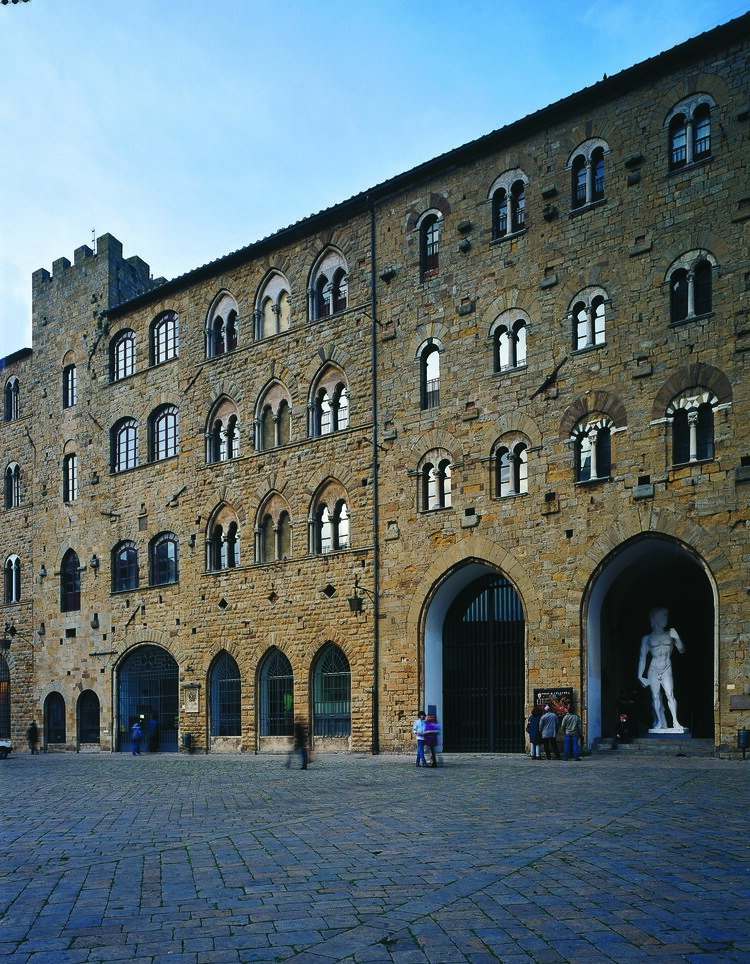I curatori Roberto Pinto e Gilda Williams, in occasione della V edizione di Art to Art hanno invitato a partecipare Kendell Geers, che ha realizzato un’opera per la città di Volterra.
"Kendell Geers created two copies of Michelangelo's David for Volterra, two souvenir sculptures that reproduce the famous masterpiece of the Italian Renaissance. During the time Kendell Geers spent in Tuscany, he was struck by the contrast, in this region rich in history, between the desire to protect ancient traditions and the service to modern international tourism on which the region's economy is based. The conflict between the industrial object and the unique, artisanal work reflects the incompatibility between the great artistic aspirations of the Renaissance and the crude tourism of the contemporary era.
Through the enlargement of a copy of Michelangelo's David—one of the many that crowd souvenir shops—restored to the exact dimensions of the original sculpture, Geers reverses the process by which a unique and monumental work of art is transformed into a mass-produced product.
Michelangelo took three years to sculpt his masterpiece in marble; the white polystyrene copy was made in just a few days. At first glance, the unsuspecting tourist might even mistake Geers' imitation for the original; but upon closer inspection, the flaws of mass production, the rigidity, and the imperfections of the cheap copy will be magnified by the large dimensions. Geers has also reproduced the "masterpiece" twice, reiterating the image of this famous sculpture, more commonly known through postcards and tourist guides than through actual contact with the work itself.
Roberto Pinto e Gilda Williams, Arte all’Arte V, 2000
The trash bin of history
"During my very brief visit to Tuscany, my thoughts constantly oscillated between the contemporary and the historical. It is truly difficult not to be struck by the strong sense of history that imposes itself at every corner, just as it is impossible not to notice the glaring influence of technology and globalization."
It is inevitable to notice the fierce battle to protect traditions from being devoured by department stores and fast food chains. Every aspect of life—culinary, domestic, or daily—is engaged in this battle between older, slower traditions and the much faster instant gratification.
I was also struck by how much the region depends on tourism, which, on one hand, provides valuable economic support, but on the other hand, ends up encouraging the "commodification" of traditional culture. Tourism is a double-edged sword, capable of creating great interest in what is local, but this interest is superficial and uncritical. One only needs to think about how quickly a Japanese or American tourist can race through an entire culture with a precise itinerary, and after seeing the object, image, or building in question, return to McDonald's for lunch, where they will likely spend more time than admiring Michelangelo’s David.
For Arte all'Arte, I would like to create an installation that responds to the clash between mass-produced technological objects and handcrafted objects made according to tradition, between the aspirations of the Renaissance and the superficial tourism that has affected those same cities and towns. My idea is to take any plastic souvenir of Michelangelo's David, the ones sold in small shops and stalls along tourist routes, and enlarge it to the scale of the original sculpture. In 1501, Michelangelo won a public competition to complete the sculpture that Agostino di Duccio had abandoned. After three years of work, he completed his masterpiece, now one of the greatest symbols of both that era and Tuscany itself.
By choosing one of the millions of copies sold every day around the world, I will reverse the process through which the generic mass-produced kitsch souvenir is transformed into a unique monumental work of art. At first glance, the object cut from polystyrene with a laser might seem like the original, and many tourists will fall into the trap. But a closer look will still reveal the lines, the superficiality, and the sketch of a cheap souvenir, grotesquely enlarged. Michelangelo took three years to complete his work; this David will be cut in less than a day from white polystyrene blocks. What was marble in the Renaissance will today be polystyrene, the material with which all our daily food is now packaged. Where Michelangelo had to sweat and struggle to free his form from the block, today's specialized computers will manage, with minimal effort, to reveal the "truth of materials" in a techno-culture of consumption. Once again, and more than ever, from this situation it will be evident that we know the masterpieces of art, like the David, more from reproductions in books and kitsch copies than from direct experience.
Kendell Geers, Arte all’Arte V, 2000

